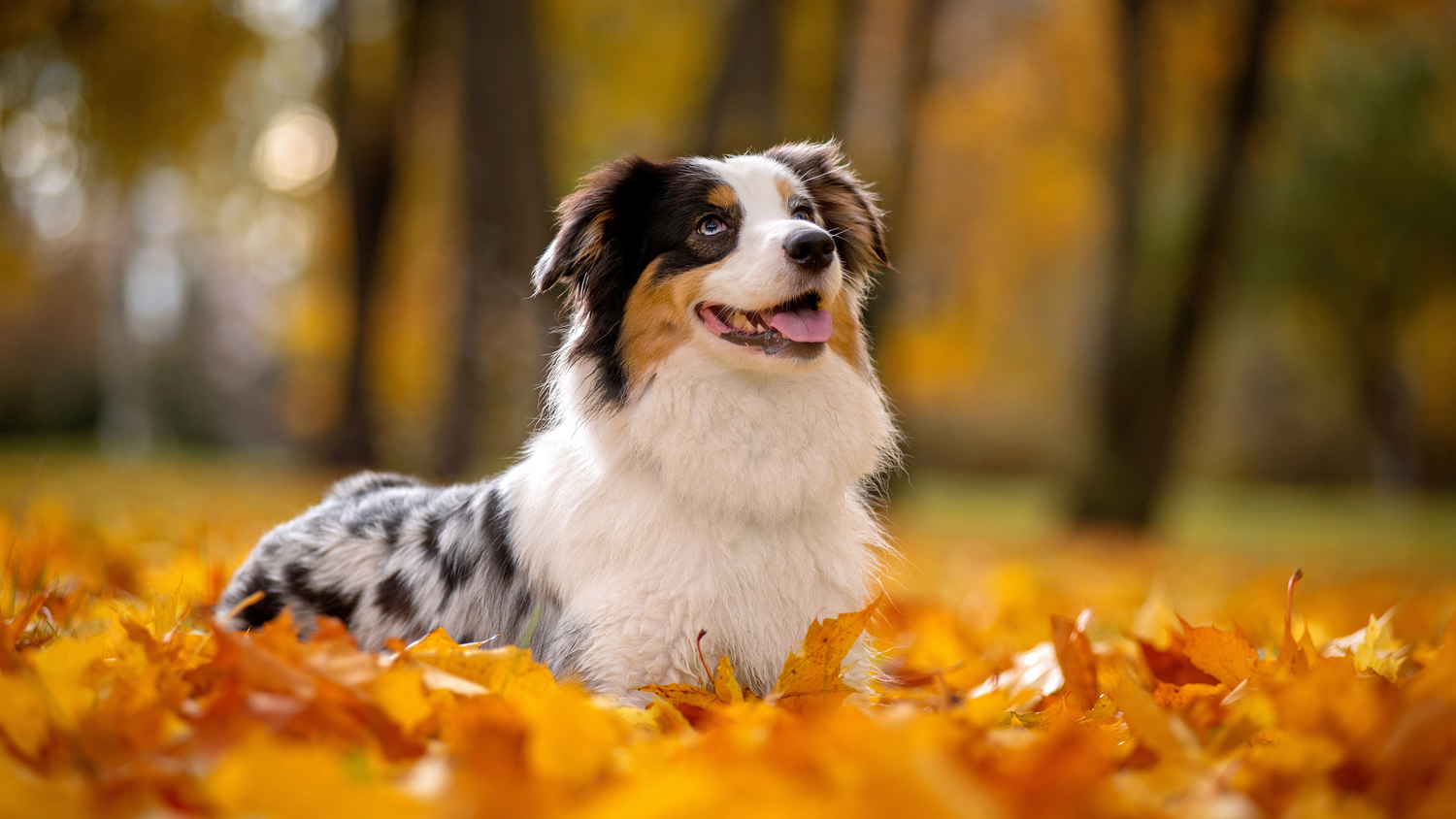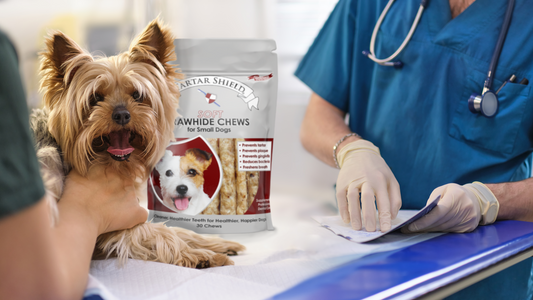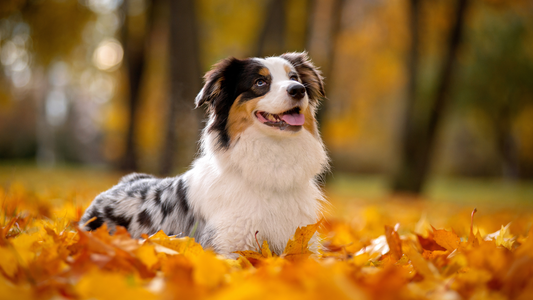Temperatures are dropping, leaves are changing, and—for many of us—a new fall allergy season is beginning. If you’re one of the millions of Americans who experience seasonal allergies, you might be familiar with the itchy eyes, runny nose, and scratchy throat often brought on by the environmental changes this time of year. But did you know that seasonal fall allergies can affect dogs too?
Just like in humans, environmental allergies are common in dogs and occur when their immune system reacts (or overreacts) to something foreign, whether by ingesting it, breathing it in, or even just coming into contact with it. While dogs may experience allergic reactions year-round, fall seasonal allergies typically last just a few months as a reaction to environmental triggers specific to fall. Read on to learn about which allergens are most common in fall, what signs of fall allergies to watch for, and how to protect your pup from a season of sneezing and scratching.
What are the most common fall allergens?
The most common causes of seasonal allergies in the fall include:
- Some plants release large amounts of pollen every year as temperatures cool, and fall winds spread that pollen through the air. The pollen is then breathed in or settles onto the skin or fur. The most common culprit is ragweed; others include pigweed, sagebrush, goldenrod, and more.
- Cooler, damp fall weather creates ideal conditions for the growth of mold spores, which are also spread through the air by wind. Outdoors, mold can thrive under piles of dead leaves, and mold indoors often grows in damp rooms or those with poor insulation.
- Dust mites. These are tiny (too small to see!) bugs that live in house dust and are commonly found on carpets, mattresses, and upholstery. While they can cause year-round allergies, dust mites are particularly a problem in the fall because they become dispersed through a house when a heating system is turned on for the first time of the season, and because people and dogs begin to spend more time indoors.
What are the symptoms of seasonal allergies in dogs?
Fall seasonal allergies are common in dogs, can impact any breed, and can cause a variety of symptoms at different levels of severity. For most dogs, allergy symptoms primarily impact the skin, resulting in atopic dermatitis. Symptoms to look out for include rashes and red, irritated, inflamed, or itchy skin, especially on the paws, belly, ears, or inner thighs. This might cause your dog to excessively scratch, bite, lick, or rub their skin, ears, or paws. Other signs of allergies can include sneezing, red or watery eyes, a runny nose, hair loss, discharge from ears, coughing, or an upset stomach.
It's important to know that infections and illnesses can cause similar symptoms, so if your dog seems to be suffering from fall allergies, be sure to bring your dog to the veterinarian to rule out any medical issues needing treatment. Also, some dogs with seasonal allergies develop secondary infections (most commonly, ear or skin infections) from excessive scratching and licking, so these should be treated too.
Remember that fleas are another common culprit of irritated and itchy skin. Fleas can be particularly problematic in the fall because they like to hide in piles of leaves and thick grass, and they don’t die until there is a hard freeze—yet many pet parents only use flea and tick medication during the summer months. You’ll want to make sure your vet can rule out fleas as the cause for any skin conditions, and consider using a flea and tick preventative year-round.
If your dog is showing signs of an allergy, your veterinarian will most likely do a full exam in order to rule out things like infections and skin mites, and they will need to find out exactly what your dog is allergic to in order to decide on the best treatment. Be prepared to share plenty of details about your dog’s symptoms, including when and how they began, if they are worse inside or outside, and whether you notice your dog scratching excessively or behaving differently.
What are the allergy treatment options?
It may take time for your veterinarian to uncover exactly what your dog is reacting to, and they may try different treatments to see what works best for your pet. Common treatments are:
- Medications. Vets often prescribe antihistamines or mild steroids to be taken only during the fall season to help alleviate your pup’s symptoms.
- Hypoallergenic shampoos. Your vet may recommend that you bathe your dog with a gentle dog shampoo containing soothing ingredients such as oatmeal or aloe vera.
- Allergy shots. For dogs with more severe symptoms that don’t respond to other treatments, your vet might try immunotherapy, in which dogs are given regular shots containing a small amount of an allergen until they build a tolerance to it.
Can I prevent dog fall allergies?
While there’s nothing you can do to prevent allergies from developing in the first place, you can keep your dog more comfortable by limiting their exposure to known allergens.
- Check your favorite weather app for a pollen forecast, and try to avoid too much time outdoors when pollen counts are high.
- After walks or playing outside, wipe your pup’s fur and paws to help remove any pollen or mold spores.
- Clean up any leaves that pile up where your dog plays.
- Change your ventilation system’s air filters regularly, and consider investing in a HEPA air filter to help keep air clear at home.
- Keep dust mites at bay by regularly vacuuming carpets and upholstery, and wash dog beds often with hot water.
- Use a dehumidifier at home if your house is susceptible to mold growth.
Does your dog have other allergies too? Just like humans, dogs can also experience food allergies and sensitivities, which can make buying dog food and treats more difficult. If you’d like to try Tartar Shield products but need to work around a limited diet, we recommend Tartar Shield DentaTabs, a hypoallergenic, taste- and odor-free water additive clinically proven to reduce tartar and keep teeth and gums healthy!



